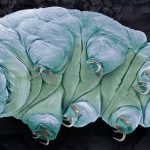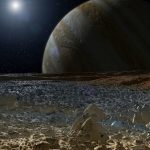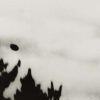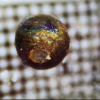How tardigrades protect their DNA to defy death0
- From Around the Web, Space
- October 11, 2019
A ‘fluffy cloud’ of protein shields water bears’ DNA from radiation, drying and other damage

A ‘fluffy cloud’ of protein shields water bears’ DNA from radiation, drying and other damage

A lunar rover which will explore the moon on foot in 2021 was unveiled in London on Thursday.

Since sprites were discovered in the late 1980s, researchers have photographed thousands of the strange upward-reaching lightning bolts. Their oversized cousins, Gigantic Jets, are far more rare. Only dozens have been photographed. It is no wonder, then, that observers are still seeing new behaviors in this type of powerful “super sprite.” On Oct. 2nd, photographer Frankie Lucena may have recorded the first example of a “double Gigantic Jet.”

A decade after NASA sent a rocket crashing into the moon’s south pole, spewing a plume of debris that revealed vast reserves of ice beneath the barren lunar surface, the space agency is racing to pick up where its little-remembered project left off.

The gas giant has 82 moons, surpassing the 79 known to orbit its larger neighbour

James Peebles laid foundation for modern cosmology while Swiss pair found first exoplanet

If you could travel back in time 3.5 billion years, what would Mars look like? The picture is evolving among scientists working with NASA’s Curiosity rover.

Israeli company successfully cultures bovine cells on International Space Station

The top priority of a robotic lander mission to Jupiter’s potentially life-supporting moon Europa should be investigating the composition and chemistry of its subsurface ocean, scientists say.

Data will still be gathered by the satellite’s successor.



